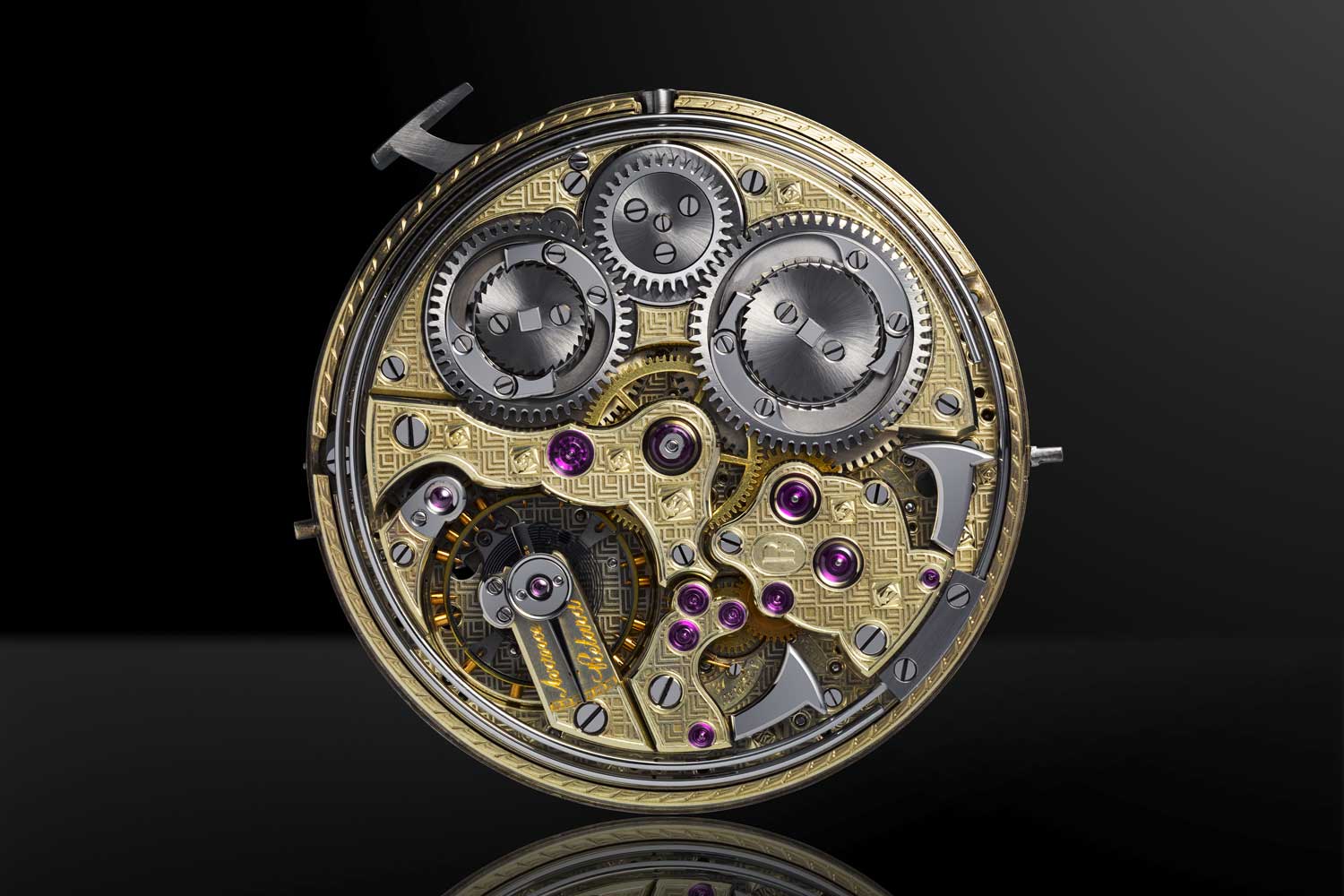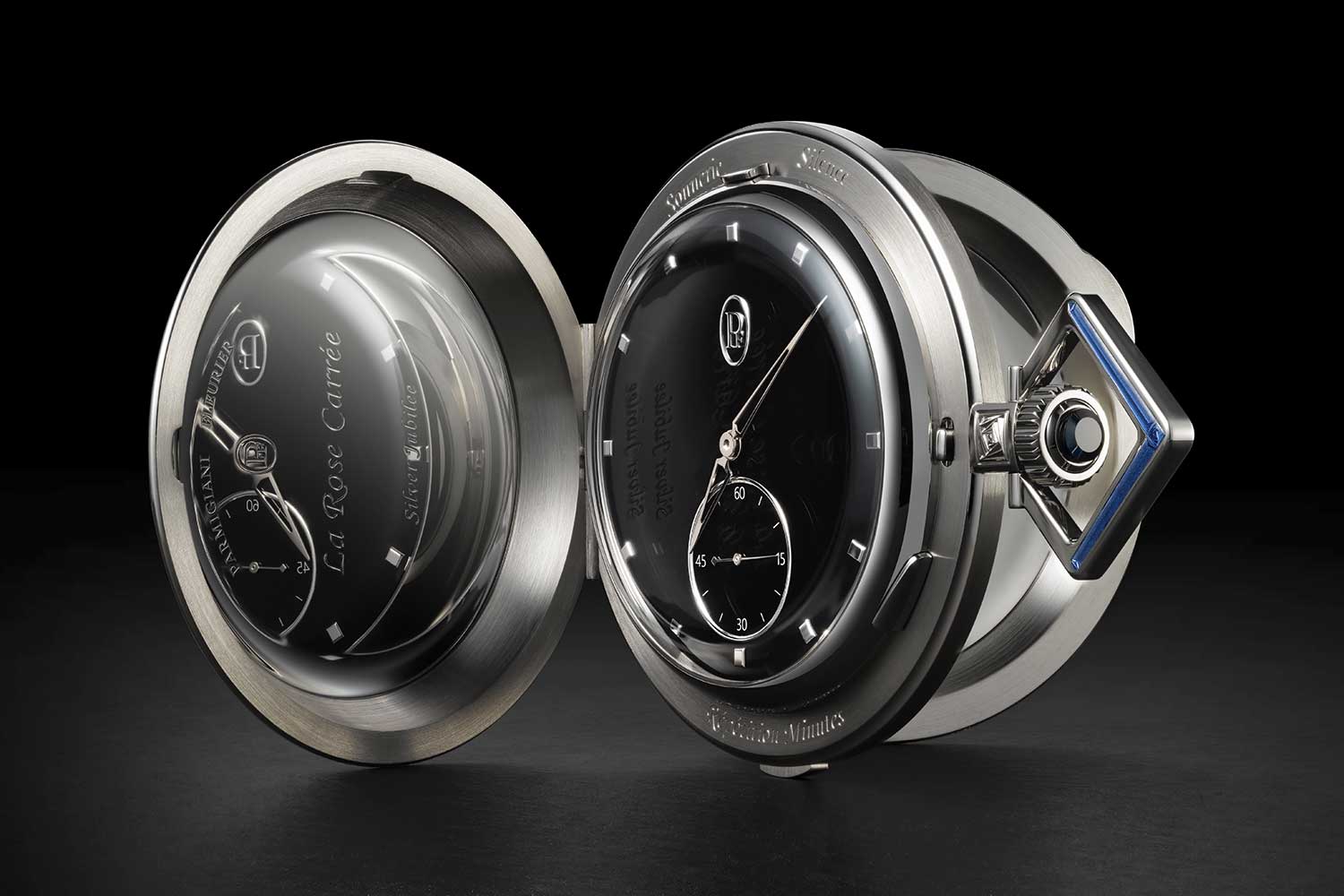Feature
The Perfect Unity Behind Biver Watches & The Carillon Tourbillon Biver
Feature
The Perfect Unity Behind Biver Watches & The Carillon Tourbillon Biver
Who exactly is Jean-Claude Biver? To try to surmise that would be trying to contain the vastness of the ocean by cupping your hands in the tide. He is, as the poet Walt Whitman would say, a man who “contains multitudes.” Amongst the various roles in the colossal heroic arc of his life’s journey, it was as a resurrectionist that he has found his greatest success and fame — first with Blancpain, and then, in the beginning of this century, he took a failing obscure brand known for combining rubber and gold in watches, and turned Hublot into one of the new millennium’s greatest success stories. But Biver’s latest role and, as he puts it, “my final one,” is as co-creator of his eponymous brand, a project that has been the subject of personal rumination for the past three decades. It is as the patron of JC Biver that the great man has found himself in the most poignant adventure of his life. Because what he is engaged in is not the mere creation of timepieces, but also the forging of a legacy that he wants to endure beyond him and be passed on to his partner in this enterprise, his son Pierre Biver.
A Journey of Rediscovery
Indeed, the story of JC Biver is, in many ways, the story of the love between a father and son, who have both discovered the world through each other’s eyes. Says Jean-Claude Biver, “I’m 74 years old. People ask me sometimes where I get my energy and my enthusiasm from? I say it is because I never get tired of discovering the world. When Pierre was a teenager, he was passionate about streetwear culture. He told me that he would love to visit Tokyo, which is the capital of this movement. I told him that I wanted to go with him. I wanted to experience Tokyo through his eyes. So he set the agenda for our trip, and we went together. And though I had visited Tokyo hundreds of times before, I rediscovered this amazing city entirely thanks to Pierre.”
Pierre shares, “From an early age, I was conscious of my father’s role in the Swiss watch industry. When I wanted to find my own path in this world, he suggested that I work at Phillips [auction house] with his friend Aurel Bacs and with a man who would become my mentor, James Marks. I fell in love with watches first through vintage timepieces, which would then give me an appreciation for modern watches as well. I loved how in this world knowledge and research are all empowering.” As it happened, Jean-Claude Biver is not only a legendary leader in the Swiss watch industry, but also one of the world’s most astute and passionate collectors of vintage timepieces focused primarily on Patek Philippe. Together, father and son would forge an extraordinary bond over the curation and refinement of their collection.
Says Jean-Claude Biver, “Pierre is modest so he will never say it, but he quickly became one of the sharpest minds in vintage collecting and really helped me to refocus on only the very best pieces. At the same time, we also both fell in love with many of the modern timepieces from brands like Patek Philippe, Audemars Piguet and Richard Mille.”
“What was really nice was to experience this evolution as collectors together,” Pierre adds. “I remember as we became more and more infatuated with independent watchmaking, we would go to visit the legends of this world such as Philippe Dufour and François-Paul Journe together.” Soon, it became apparent that their minds and hearts were inextricably linked around their taste in watches. Says Pierre, “It became second nature for us to talk about ‘What if we were to design our own watches? What would they look like, and feel like? What complications would we love to feature? How could we bring technical innovation based on our experiences as collectors that would make better, more reliable, easier to use timepieces?’” Indeed, it seems inevitable that the father and son would eventually create their own brand.
Lessons of the Past
The first thing that father and son immediately shared was that their brand would be an expression of neoclassical watchmaking. In many ways, the project would transport Jean-Claude Biver 40 years into the past, when he first embarked on the resurrection of Blancpain in partnership with the legendary Jacques Piguet. What they would achieve between 1983 and 1992 was unprecedented in horology. Within just nine years, they would have a massive role in the renaissance of mechanical watchmaking. But then, in 1992, Biver would sell the brand to the Swatch Group.
He admits, “I don’t think I’ve ever said this publicly before, but I have always regretted selling Blancpain. So why did I do it? I was going through my divorce of my first wife. It was the first time I had ever failed at anything. Before that, I had always had success. Success in sports, in business and even with women. But this was truly demoralizing. Just a few years before, I felt I had been on top of the world.
“Probably, for me, the high point was when I closed my factory and took all of my employees on a trip to Naples. There, we went to look at the micro-mosaics at the National Archaeological Museum to understand that from the beginning of time, man was able to express such incredible beauty through his mind and his hands. This was the beauty that we transmitted to our watches. When I came back, I received a long scroll signed by every one of my employees that pledged to work five Sundays in return for the seven days that I had given them for the trip. I was immensely touched by this. But, in sharp contrast, a few years later, while going through my divorce, I fell into a depression and I stopped going to the office. One day, my friend who sat on my board of directors, said to me, ‘Either you snap out of it and you come back to this office or you should sell the company, because there are some people interested to purchase it.’ Before I knew it, I instinctively said, ‘Go ahead and sell it.’ A few days later, he called me up and told me that he had organized the sale to Mr. Hayek of the Swatch Group. It didn’t take me long to realize that this would become one of my greatest regrets.
Blancpain was the brand in the ’80s that revived mechanical and complicated watchmaking. In less than a decade, we had mastered every known complication, and some of the movements we made, such as the ultra thin column wheel, vertical clutch caliber 1185, are still amongst the best today. I would sometimes wonder what would life be like if I had never sold and continued in the tradition of classical watchmaking, which is truly where my heart lies.”
Reframing the Art of Classical Watchmaking
So when it came time to create his eponymous brand, Jean-Claude Biver already had over 30 years of thinking about the type of watches he wanted to create.

The father-and-son duo want JC Biver watches to celebrate neoclassical watchmaking and the legacy of Vallée de Joux watchmaking (Photography Sébastien Agnetti)

Parmigiani Fleurier La Rose Carrée

Parmigiani Fleurier La Rose Carrée
It is also a very beautifully finished timepiece. Says Pierre Biver, “We recognize that the most sophisticated collectors’ tastes have evolved to focus on three things: truly beautiful neoclassical design, incredible technical innovation but in smaller wearable sizes, and sublime hand finishing. As these are also our primary considerations as collectors, we understood very well the desirability of these values.”
Building a Brand for the Future
Another major priority for both father and son was that the movement’s finish should take its prospective owners’ breath away. In order to achieve that, they brought in some of the industry’s most experienced artisans in hand finishing. Says Jean-Claude Biver, “We need to let our head of development and head of finishing work together at the start of every project so that technical innovation is always matched by aesthetic beauty.”
Says Jean-Claude Biver with a laugh, “Yes, I was amongst the first to use this concept of things created under one roof. Because, in those early years, during the revival of mechanical watchmaking, we needed strong storytelling and this was one thing that really resonated with collectors. Later, when brands and movement makers were purchased by big groups, it became popular to call something in-house. One of the most brilliant men to use this as a marketing strategy was Günter Blümlein, who oversaw the creation of A. Lange & Söhne using this blueprint.”
Over the last two years, the father-and-son pair scoured the landscape of haute de gamme horlogerie for the right partners. Jean-Claude Biver reveals, “We searched all over Switzerland. Finally, it was two important and long-time friends that suggested Alain Schiesser of Le Cercle des Horlogers. They had all worked together at BNB Concept, along with people like Rexhep Rexhepi, in the mid 2000s. So we went to visit him and were truly impressed with what we saw.”
Pierre adds, “Together with our head of development François Perez [formerly of Concepto] who oversees all the technical development of our watches, we have created a plan well into the foreseeable future. I don’t want to reveal too much, but we are working on timepieces with proportions that make them incredibly wearable and elegant.”
Tech Specs
Carillon Tourbillon Biver
Movement: Self-winding caliber JCB-001;72-hour power reserve
Functions: Hours, minutes, tourbillon, carillon minute repeater, micro-rotor
Case: 42mm; titanium or 5N gold; water resistant to 50m
Strap: 5N gold or titanium, exclusive five-link BIVER design
Price: Starting from CHF 520,000 / EUR 520,000 / USD 550,000










